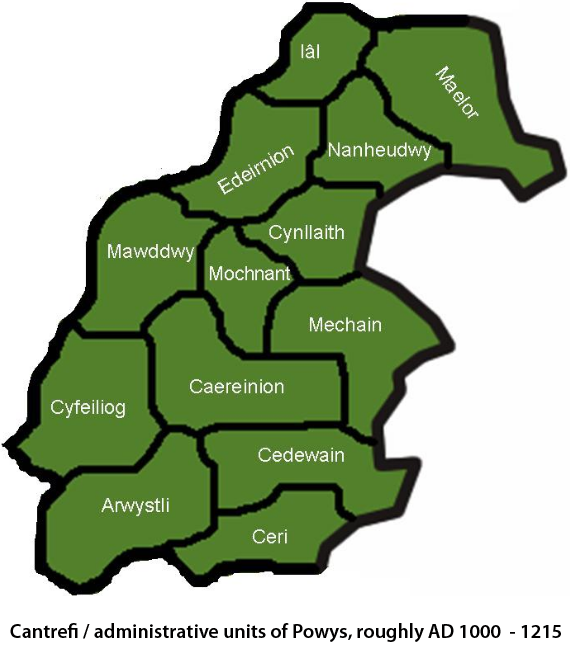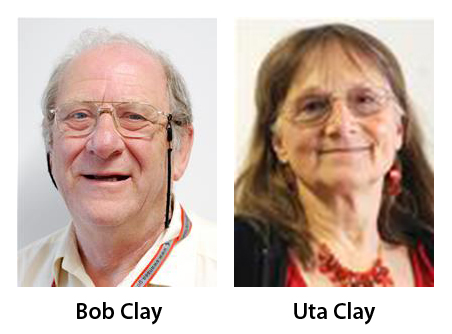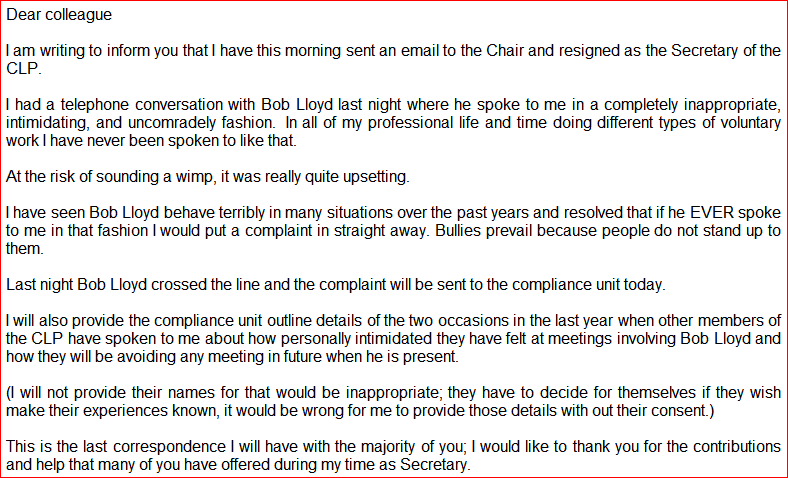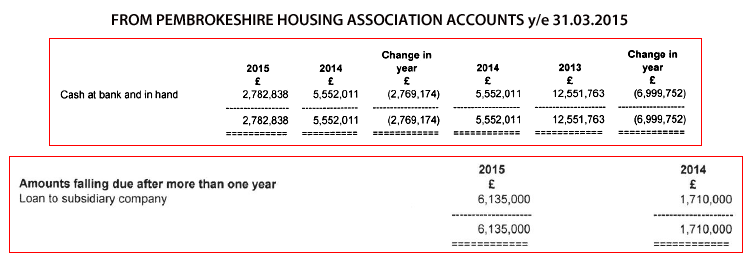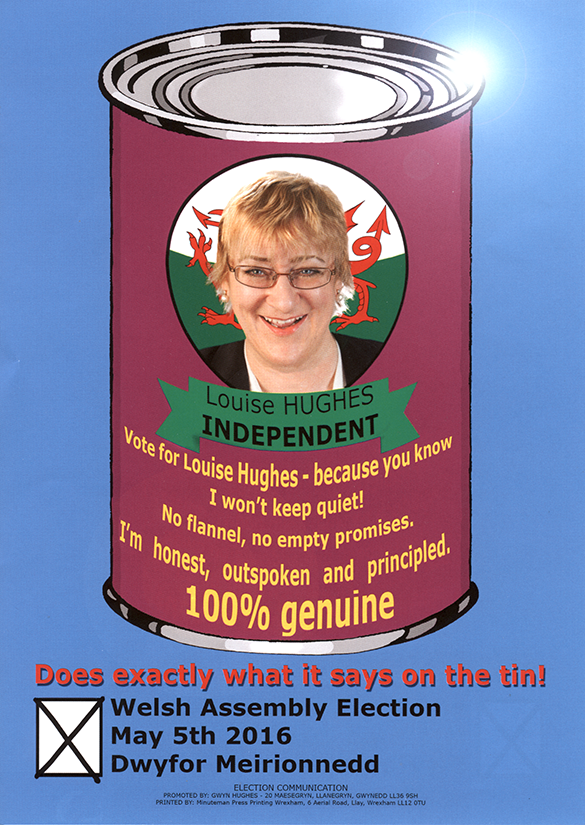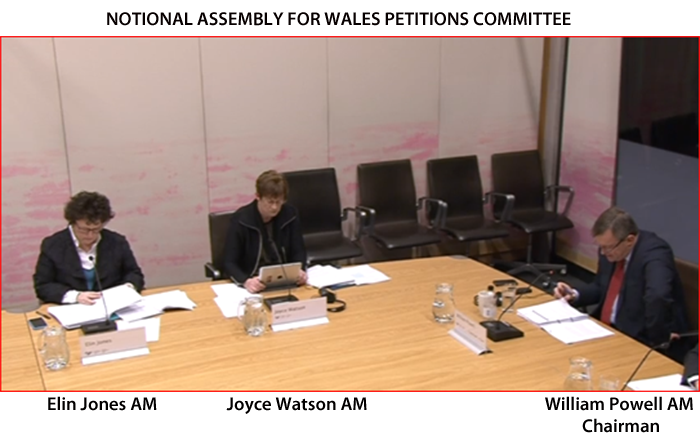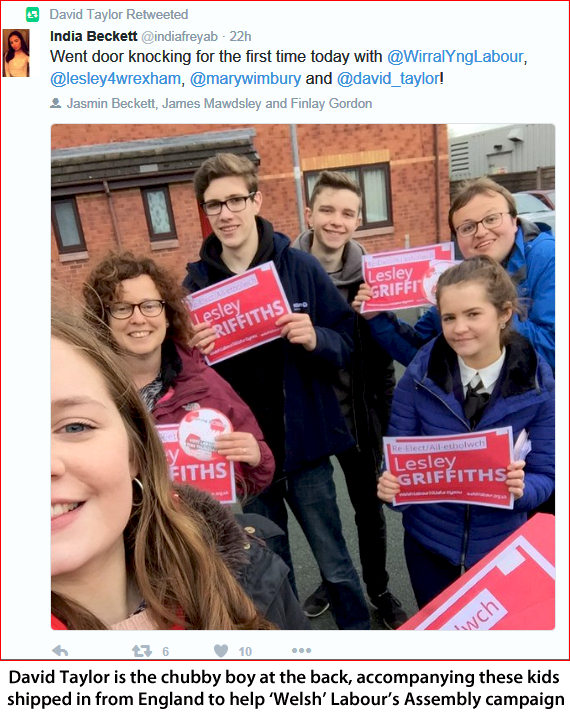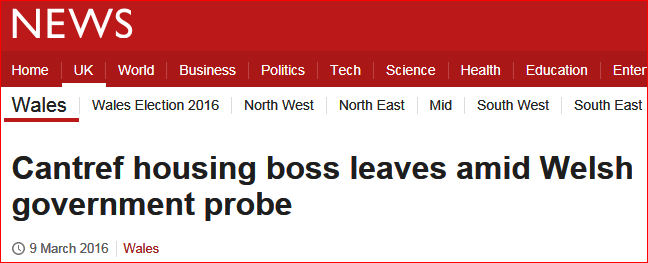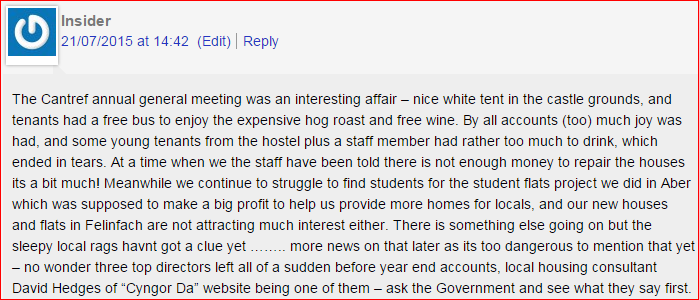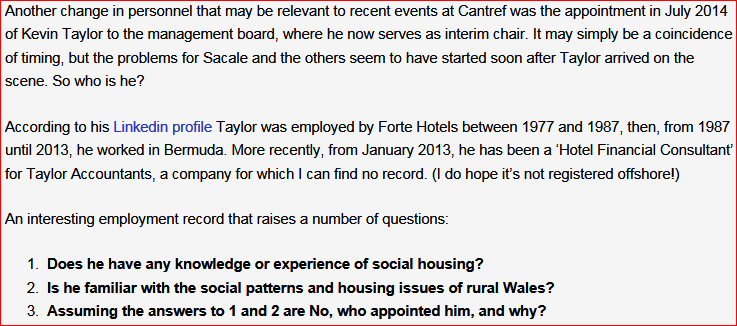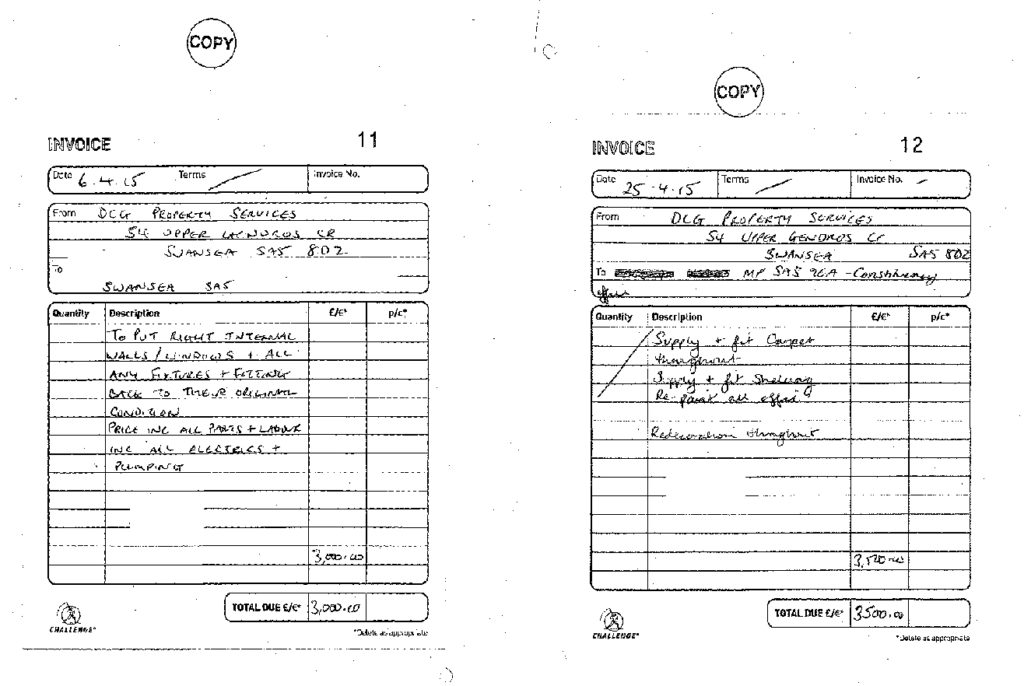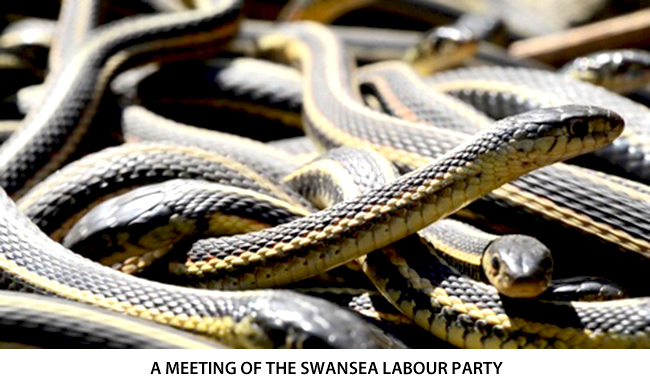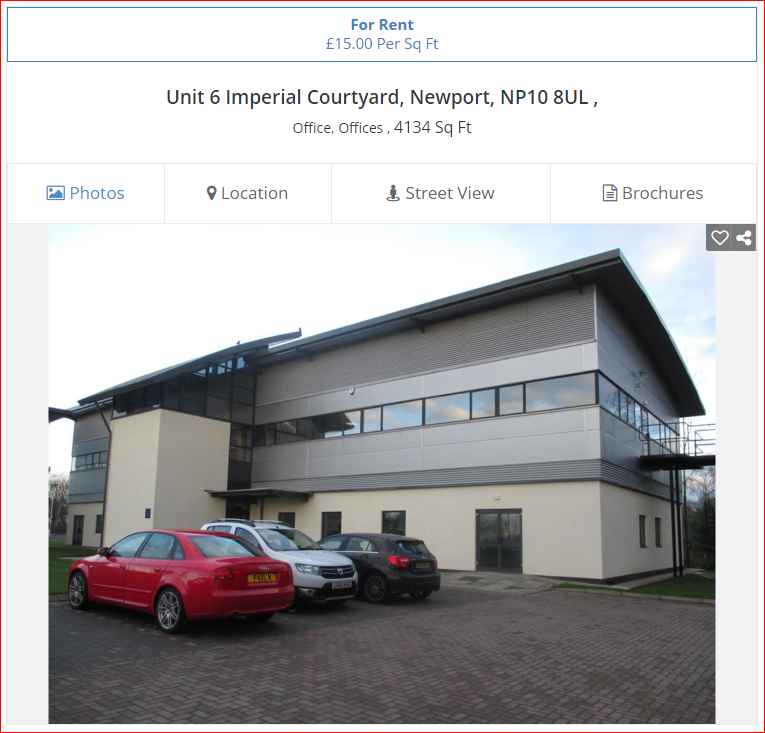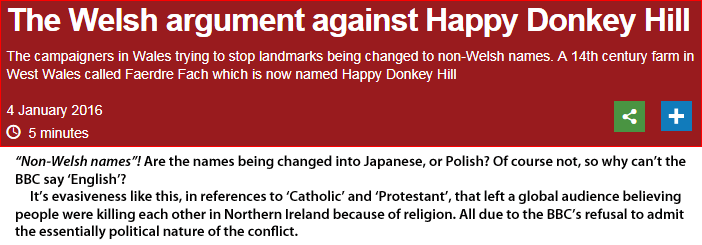THREAT OF LEGAL ACTION
Late in the afternoon of Tuesday May 31st I received an e-mail from Tracey Singlehurst-Ward of Hugh James Legal in Cardiff. Ms Singlehurst-Ward was of the opinion that I’d been a naughty boy for saying things about her clients, Pembrokeshire Housing and its ‘subsidiary’ Mill Bay Homes. I of course responded.
Ms Singlehurst-Ward’s letter threatened me with a deadline of 4pm on June 3rd, just three days away. If I had not drastically re-written the offending posts by that time then all manner of unpleasant things would befall me. Being a reasonable man, I offered the compromise of taking down the offending pieces by June 10th, by when I would have published a ‘clarification’ post. Having heard nothing from Ms Singlehurst-Ward by the afternoon of June 2nd I thought I’d better get in touch again, to see if my offer had been accepted.
Finding that my offer had been rejected I had to accept that I was in a somewhat tricky position, and so I decided upon a tactical withdrawal by taking down the offending pieces rather than redacting the offending passages and making them unintelligible.
For there were things I’d written that could be misinterpreted, some of what I’d written might have been wrong (usually due to misinformation, often from official sources). And then Ms Singleton-Ward had produced a litany of earth-shattering inaccuracies such as someone described as a ‘former councillor’ by Pembrokeshire Housing not having been a councillor in Pembrokeshire, as I had reasonably assumed, and stated.

There followed a third round of correspondence between us and, hopefully, that’s the end of it, otherwise we’ll have enough material for an epistolary novel. But wait! – Ms Singlehurst-Ward and her clients haven’t read this post yet!
It seemed fairly obvious from the initial salvo that someone had gone to Ms Singlehurst-Ward with a dossier of posts from my blog. This was, basically, what she sent me; screen shots from my blog topped and tailed with her listing my heinous crimes. It probably didn’t take her long to put together.
But seeing as this assault on me is being funded out of the Welsh public purse, and seeing as Ms Singlehurst-Ward charges £260 an hour, maybe we should be thankful she hasn’t been asked to do too much work.
*
WHERE I’M COMING FROM
In this blog, which has been running since January 2013 (and in the blog that preceded it on the Google platform), I have consistently criticised the Labour Party and the cronyism and nepotism associated with it; a system of patronage that has seen billions of pounds of public money wasted, a system that does so much to condemn Wales to relative poverty.
One of the great weaknesses of this system is that there is no effective oversight or monitoring of the bodies receiving large amounts of public funding. Much is left to self-evaluation and self-regulation, an approach that served the public interest so well with MPs, newspapers, banks, etc. On the other hand, one of the system’s strengths, certainly from the perspective of the Labour Party, is that it helps spread Labour’s influence.
Because if a Labour regime in Cardiff ultimately controls the purse strings of a body in an area where the Labour Party is weak, then a passive ‘loyalty’ of the not-biting-the-hand-that-feeds-you variety can be assured. Which is rewarded with the ‘light touch’ regulation referred to in the previous paragraph.
Another reason this system flourishes is due to the lack of an effective political opposition. Plaid Cymru occasionally threatens to hold Labour to account but invariably falls into line because too many in that party still view Labour as comrades in arms against the real enemy of the Tories, or the here-today-gone-tomorrow ‘threat’ of UKIP.
But beyond that, Plaid Cymru is fundamentally weak. Even in the dictatorship that is Carmarthenshire Plaid Cymru, the larger party in the ruling coalition, refuses to oust, or even curb, Mark James, which tells us that the chances of Plaid Cymru seriously threatening Labour’s entrenched hegemony in Wales are close to zero.
Another factor that allows Labour to chug on unworried by criticism is that Wales has no media to talk of, virtually nothing that is not owned or controlled from outside of Wales. What masquerades as our ‘national newspaper’ exists to promote Cardiff, to donate page after page to the Welsh Rugby Union and, despite having a readership plummeting towards man and dog proportions, is kept financially afloat by official announcements, legal notices and advertisements paid for by – the ‘Welsh’ Labour Government.
And yet, despite having no real opposition, and with no media to hold it to account, Labour is still losing its grip on Wales. Perhaps it’s an example of the old adage ‘You can’t fool all of the people all of the time’; but whatever the reason, Labour gained just a third of the vote in last month’s Assembly elections.
Wales in 2016 lives under a corrupt political system that generates little wealth and is over-reliant on hand-outs; but these hand-outs, rather than being used for the purposes the money was given – education and training, building of infrastructure, encouragement of twenty-first-century businesses – are instead used to build up a network beholden to those doling out the money.
Which results in Wales today having more in common with the developing world than with Western Europe. In a couple of weeks we’ll be voting on whether to stay in the EU, maybe we should be voting on whether or not to join the African Union.
*
THE SUBSTANCE OF THE MATTER
Pembrokeshire Housing Association is a Registered Social Landlord (P072) with the ‘Welsh’ Government and also registered with the Financial Conduct Authority as an Industrial & Provident Society (23308R). Since 2008 Pembrokeshire Housing has received around £28m in Social Housing Grant from the ‘Welsh’ Government, and there are other funding streams.
The issues arise when we consider Pembrokeshire Housing’s subsidiary, Mill Bay Homes, and to appreciate my concerns we need to go back a bit. In 1998 Pembrokeshire Housing formed a subsidiary called Pembrokeshire Housing Two Thousand Ltd, the sort of name popular at the time as we prepared for the Millennium.
The genesis of Mill Bay Homes
The panel below is taken from what I believe to be the last return made by PH2000 Ltd to the FCA before the name was changed in 2012 to Mill Bay Homes Ltd. You’ll see that despite being in existence for some twelve years PH2000 Ltd did nothing. The Return says that turnover for the year was just £810, which seems mainly attributable to interest on assets of £30,995.

Though it does perhaps raise the question of how a company that had never traded came into possession of any assets.
The nature of Mill Bay Homes
So what is Mill Bay Homes, why was it set up and what does it do? Apparently it was set up to do exactly what PH2000 Ltd never got round to doing: “undertake trading activity outside the charitable objectives of parent association”. In that case, why change the name?
The home page of the Mill Bay Homes website spells out quite clearly what it thinks it does, it seems to be all about that overworked word, ‘lifestyle’:

Elsewhere the website tells us, under the ‘Purchasers’ tab, that Mill Bay Homes seeks ‘First Time Buyers’, ‘Moving Up Buyers’, ‘Retirement Buyers’ and ‘Investment Buyers’. So that’s downsizers and upsizers catered for.
The first, and only, returns that I can find for Mill Bay Homes are those for 2012 / 2013, made to the Financial Conduct Authority. It will be seen that Mill Bay Homes has assets of over £300,000, of which £294,390 is “Work in progress”, presumably the development of 11 properties at Letterston, helped with a “Loan from parent company” of £245,000. This seems to be the only sizeable debt – but enough to build eleven new houses?
‘Welsh’ Government’
In the now removed posts I made the mistake of suggesting that Mill Bay Homes was not a Registered Social Landlord because I couldn’t find it on the ‘Welsh’ Government’s website where RSLs are listed. That was because the website did not include subsidiaries. I am happy to clear that up and direct you to the relevant page.
This registration, and the very number, L124, were inherited from Pembrokeshire Housing 2000 Ltd, which some might argue legitimises Mill Bay Homes as a RSL, being nothing more than PH2000 Ltd after a name change. Whereas others might say, ‘Ah, but Pembrokeshire Housing Two Thousand Ltd never traded, consequently there was neither need nor opportunity to challenge its right to be a RSL’. Others, that is, not necessarily me.
Because I’m sure that some people reading this article are wondering whether Mill Bay Homes – which to all intents and purposes is a private house builder – should be a Registered Social Landlord. A question motivated by nothing more than curiosity and a wish to see everything ship-shape.
So let me suggest that the ‘Welsh’ Government clears this matter up. All it needs to say is:
‘We are perfectly happy for Mill Bay Homes to remain a Registered Social Landlord while selling four-bedroom, detached properties, and building other dwellings that target buy-to-let investors and retirees from England’.
What could be easier than that, just to set the record straight?
Financial Conduct Authority
A similar problem presents itself with Mill Bay Homes status via-à-vis the Financial Conduct Authority, where – I am given understand – Mill Bay Homes is registered as an Industrial & Provident Society. And yet, things are not clear-cut.
Mill Bay Homes insists it is registered with the FCA, and indeed, in the second batch of correspondence between us, Ms Singlehurst-Ward even supplied copies of what she said were letters accompanying those returns. Yet the FCA says Mill Bay Homes has filed nothing since 2013. The website says the same thing.
I can’t help wondering if this conundrum might have something to do with the Co-operative and Community Benefits Societies Act 2014. This new legislation seems to suggests that Industrial and Provident Societies are now a thing of the past – replaced by ‘registered societies’ – though the label may be retained by an I&PS in existence when the Act came into force.
Where I’m really confused – and here perhaps Ms Singlehurst-Ward or one of her colleagues can help – is by the information contained in the panel below. Under the new legislation is Mill Bay Homes is ‘”bona fide” co-operative’ or a ‘for the benefit of the community’ organisation?

I’m genuinely confused, so I shall write to the FCA asking for clarification of Mill Bay Homes’ status. I’m sure officials at Mill Bay Homes have already written to the FCA, demanding an explanation as to why two years’ returns fail to show on the FCA website.
My confusion is not helped by Ms Singlehurst-Ward being unable to provide any evidence of the FCA receiving those submissions beyond an unspecific automated response. And while the Mill Bay Homes return for y/e 31.03.2014 is in the name of Mill Bay Homes alone, for y/e 31.03.2015 the return was made for MBH by Pembrokeshire Housing.
Is the difference in procedure between end of March 2014 and end of March 2015 somehow linked with the new legislation that came into force on August 1st 2014?
Help to Buy – Wales
In the posts now committed to the Outer Darkness I wrote of the Help to Buy – Wales scheme, and Mill Bay’s involvement. Specifically, I drew attention to the fact that one of the beneficiaries of HtB on the Pentlepoir development, Adam Karl Uka, is a close personal friend of Nick Garrod, Land and Construction Manager for Mill Bay Homes.
Ms Singlehurst-Ward had this to say: “For the avoidance of doubt the connection between our client’s employee (Garrod) and Mr Uka could not have had any impact upon the latter’s application to the Help to Buy scheme because our client does not administer that funding”.
So there you have it. Being buddies with the builder is unconnected with being allowed to buy the most desirable property on the development, a property offering access to Help to Buy, and one that, furthermore, was extensively modified to Uka’s personal specifications.
UPDATE 21:26 (see image, click to enlarge)

There were quite a number of other Help to Buy properties at the Pentlepoir development. Many more than at all Mill Bay Homes’ other developments combined.
This talk of Pentlepoir brings us to an issue covered in one of my now lost posts that clearly annoyed Ms Singlehurst-Ward’s clients. I’m referring to my claim that Mill Bay Homes were, in the specific example I used, ‘Neighbours from Hell’. So let me explain why I used that emotive term.
‘Neighbours from Hell’
The property bought by Adam Karl Uka underwent considerable modifications, and these changes caused a lot of anguish and no little suffering to the family most directly affected.
Before going into details of their plight let me clear up the issue of planning permission, for Ms Singlehurst-Ward seems to believe there was no deviation from the original planning permission. This document makes it clear there was deviation. The ‘Plot 10’ referred to in the document became 35 Coppins Park, Adam Karl Uka’s residence.
What Ms Singlehurst-Ward actually said in relation to planning permission was, “All properties (at Pentlepoir) were constructed in accordance with the planning permission granted”. Maybe, but in the case of 35 Coppins Park, it was not in accordance with the original planning permission.
As you can work out from the ‘Variation’ document, the new property became both higher, raised by at least a metre, thereby overlooking neighbouring properties, and it also moved closer to the property most directly affected. This resulted in work being carried out by Mill Bay’s contractors right up to the boundary of a neighbouring property, resulting in damage.
Both proximity to the boundary and some of the damage caused are clearly visible in the photographs below. (Click to enlarge.) Other problems were subsidence and damage to a boundary fence.

As if that wasn’t bad enough, the contractors showed they had a sense of humour (or something) with this almost unbelievable incident in which a digger bucket was deliberately swung towards two neighbours. Just watch this video. The neighbours could have been seriously injured or even killed by this idiotic stunt. Here’s a still showing how close the bucket came to the head of the woman.

There is no question that for one family at least, Mill Bay Homes definitely proved to be the ‘Neighbour from Hell’. Read these neighbours’ chilling account of what they had to put up with here.
It may be significant that for Phase 2 at Pentlepoir, which included Mr Uka’s house, and where neighbours experienced such problems, the contractors did not register with the Considerate Constructors Scheme, as they had for Phase 1. I wonder why?

*
‘SUBSIDIARIES’
The relationship between a ‘parent’ organisation such as Pembrokeshire Housing and a subsidiary like Mill Bay Homes is one I’ve encountered many times before in my delving into the Third Sector and other publicly-funded outfits.
These subsidiaries are often known as ‘trading arms’. After many years investigating the use of public funding by all manner of imaginative organisations I still get a little frisson when I encounter the term.
Here’s an example from early last year when someone drew my attention to Canoe Wales. My first post was White Water Up Shit Creek, followed by Canoe Wales 2, and finally, Canoe Wales 3: Paddling One’s Own Canoe. Not.
It’s quite a complicated picture of an organisation receiving public funding but with money and tangible assets passing between it and subsidiaries, with subsidiaries folding and debts being written off. But the worry here, and this applies to other groups I’ve looked at, is that the funder – in this case, Sport Wales – seems only interested in the parent body because it is the one receiving the moolah. Nobody seems concerned about subsidiaries that may be indirect recipients of public funding.
I am not for one minute suggesting that this is the sort of thing that happens between Pembrokeshire Housing and Mill Bay Homes, I merely use it as a warning of the kind of problems that can arise when a publicly-funded body sets up subsidiaries or ‘trading arms’.
That said, there is one area where Pembrokeshire Housing and Mill Bay Homes could certainly learn from Canoe Wales. After publishing the first post I had a telephone call from a representative of the paddlers. A charming Caledonian gent named Mark Williamson. He even invited me over to their White Water Centre on Afon Tryweryn.
I was tempted, but then I thought, ‘What if it’s a dastardly plot to drown old Jac!’ Because I’ve heard that there are one or two people out there who’d like to do that! (Difficult to believe, I know, but there you are.)
The point is that Mr Williamson didn’t run to a £260 an hour solicitor, he fronted up like a man and said, ‘Let me put you straight on a few things’. Just think of all the misunderstandings that could be avoided, all the problems that could be resolved, and all the public money that could be saved, if more people adopted that approach.
*
A PLAGUE OF LAWYERS
For a sensitive soul such as I it was quite disconcerting to be on the receiving end of a sudden and unexpected assault from Hugh James, but I soon learnt that I wasn’t the only one getting attention.
At around the same time I received my initial letter from Hugh James my server Systemau Cyfrifiadurol Cambria also received a threatening letter from Ms Singlehurst-Ward. It read ” . . . website hosted by you . . . defamatory . . . Jac utter bastard”. Almost certainly done in the hope that it would lead to the plug being pulled on my blog. Gwilym, of SCCambria, gave a robust response.
But it didn’t end there!
For on Friday June 3rd I learnt that the family in Pentlepoir that had suffered so much, they who had the digger bucket swung at them, had also received a letter from Ms Singlehurst-Ward of Hugh James. Her clients obviously knew who had been giving me information. (Which says a lot, if you think about it.)
I loved the bit in the letter that read, “Whilst out clients have no desire to stifle free speech or indeed honest debate . . . “. Sorry, Tracey, love, but that’s exactly what your now embarrassed clients are trying to do.
The aggrieved couple referred the threatening Hugh James letter to both their solicitor and Dyfed Powys Police.
Then, to cap an extraordinary week, Gwilym received a second letter, from another solicitor, this time a Wayne Beynon of Capital Law in Cardiff. This letter had nothing to do with Pembrokeshire Housing or Mill Bay Homes.

Beynon was acting on behalf of Leighton Andrews. You must remember him, he used to be the Assembly Member for Rhondda. He was upset about a comment to my post Assembly Elections 2016. This comment suggested a link between a jailed paedophile a failed PCC candidate and Andrews.
The strange thing about this was that the complaint came down to a single comment made to this post by a third party. So why not write to me? I would have removed it, as I did when Gwilym told me about it. (Here’s my reply.)
While writing this I’ve heard from Gwilym, telling me that he’s had a reply from Beynon. It says, “I have also been contacted by your client, Mr Jones, who has removed the unlawful statements from his website.” And there was me thinking that decisions on what was unlawful involved the police, judges, courts, juries. Perhaps we should do away with the rest of the apparatus and hand the legal system over to lawyers.
What are we to make of the events of last week? If it had just been a letter to me then I would have assumed that I had pissed off Pembrokeshire Housing and / or Mill Bay Homes. But the letters to my server, and the people in Pentlepoir? And then the letter on behalf of Leighton Andrews?
If I wanted to be generous, then I suppose I’d dismiss it all as coincidence. But on reflection I think it could be an attempt to a) deter anyone from associating themselves with this blog and, b) get this blog closed down.
Which I find rather encouraging; for it suggests I might be doing something right!
*
MY MOTIVATION
I do not know any of the leading players in Pembrokeshire Housing or Mill Bay Homes, so there can be no question of me being motivated by personal animus. I have had no dealings of any description with PH or MBH. I have never even lived in Pembrokeshire. And I stand to make no personal gain from my writings on PH and MBH.
My motivation in my enquiries into PH and MBH – and countless other organisations I have investigated – has always been protection of the public interest and defence of the public purse; these ambitions being inseparable from the desire to see transparency in the operations of devolved government, local government and the Third Sector.
I find myself writing this on the anniversary of the attack on the toll gate at Yr Efail Wen. A banner often carried by ‘Rebecca’s followers read ‘Cyfiawnder nid Cyfraith’ (Justice not Law). As appropriate now as it was back then, because not a lot seems to have changed in almost two hundred years.
Wales is still a land with too much law and too little justice. And as ever, it’s those with deep pockets who can afford lawyers – but too often nowadays their pockets bulge with our money!
~ ~ ~ ~ ~ ~ ~ ~ ~ ~ END ~ ~ ~ ~ ~ ~ ~ ~ ~ ~
NEXT: The EU referendum, and why I’m voting Leave



